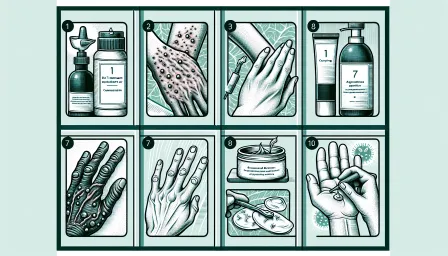Understanding Your Waist-to-Hip Ratio Chart: A Comprehensive Guide

Explore the intricacies of the waist-to-hip ratio chart with this comprehensive guide. Discover how to measure, interpret, and use this vital health metric for better wellness.
Introduction
In the pursuit of a healthier lifestyle, knowing your waist-to-hip ratio (WHR) can be a valuable metric. This comprehensive guide will explain what the waist-to-hip ratio chart is, how to measure it, its significance for your health, and what the numbers mean. With a clear understanding of the WHR, you can take proactive steps toward improved well-being.
What is the Waist-to-Hip Ratio?
The waist-to-hip ratio (WHR) is a simple measure of the proportion of fat stored on your body around your waist and hips. This ratio is calculated by dividing the circumference of your waist by the circumference of your hips. The waist-to-hip ratio chart helps interpret these values and understand the potential health risks associated with your WHR.
How to Measure Your Waist-to-Hip Ratio
Step-by-Step Guide
- Measure Your Waist: Use a measuring tape to measure the smallest part of your waist, just above your navel. Ensure the tape is snug but not compressing your skin.
- Measure Your Hips: Measure the circumference of the widest part of your hips, which is typically around the buttocks.
- Calculate the Ratio: Divide your waist measurement by your hip measurement to get your WHR.
Example Calculation
For instance, if your waist measurement is 30 inches and your hip measurement is 40 inches, your WHR would be:
30 ÷ 40 = 0.75
Interpreting the Waist-to-Hip Ratio Chart
The waist-to-hip ratio chart categorizes WHR values into various risk levels for health conditions, helping you understand the implications of your measurements. Here’s a general interpretation guide:
| WHR Range | Health Risk (Women) | Health Risk (Men) |
|---|---|---|
| 0.80 or lower | Low | Low |
| 0.81 - 0.85 | Moderate | Moderate |
| 0.85 or higher | High | High |
Significance of Waist-to-Hip Ratio for Health
Your WHR is a crucial indicator of your health status, especially in predicting chronic conditions such as cardiovascular diseases, diabetes, and metabolic syndrome. Unlike Body Mass Index (BMI), which can sometimes misrepresent the distribution of body fat, WHR gives a direct indication of visceral fat - the fat stored around your organs.
Cardiovascular Risk
A higher WHR indicates a higher risk of heart disease. Individuals with more abdominal fat tend to have higher levels of bad cholesterol and triglycerides, which are risk factors for cardiovascular conditions.
Diabetes and Metabolic Syndrome
People with a high WHR are more likely to develop insulin resistance, leading to Type 2 diabetes and metabolic syndrome. This is because visceral fat can interfere with the body's ability to use insulin effectively.
Strategies to Improve Your Waist-to-Hip Ratio
Maintaining or improving your WHR involves a combination of healthy dietary choices and regular physical activities. Here are some strategies to help manage your WHR effectively:
Healthy Eating
- Balanced Diet: Incorporate a mix of lean proteins, healthy fats, and complex carbohydrates into your meals.
- Reduce Sugars: Minimize the intake of sugary foods and beverages that can contribute to abdominal fat.
- Fiber Intake: High-fiber foods help reduce overall body fat and improve waist-to-hip ratios.
Regular Exercise
- Cardiovascular Activities: Engage in activities like walking, running, or cycling that elevate the heart rate and burn calories.
- Strength Training: Building muscle helps boost metabolism, aiding in fat reduction, especially around the waist.
- Core Workouts: Exercises targeting the abdominal area, like planks and sit-ups, can tone the waist and reduce size.
Conclusion
Understanding and monitoring your waist-to-hip ratio is an essential aspect of maintaining overall health and well-being. By following this guide, you can effectively measure, interpret, and manage your WHR. Adopting healthy lifestyle choices will not only improve your WHR but also reduce the risk of associated health conditions, leading to a healthier, happier life.



























